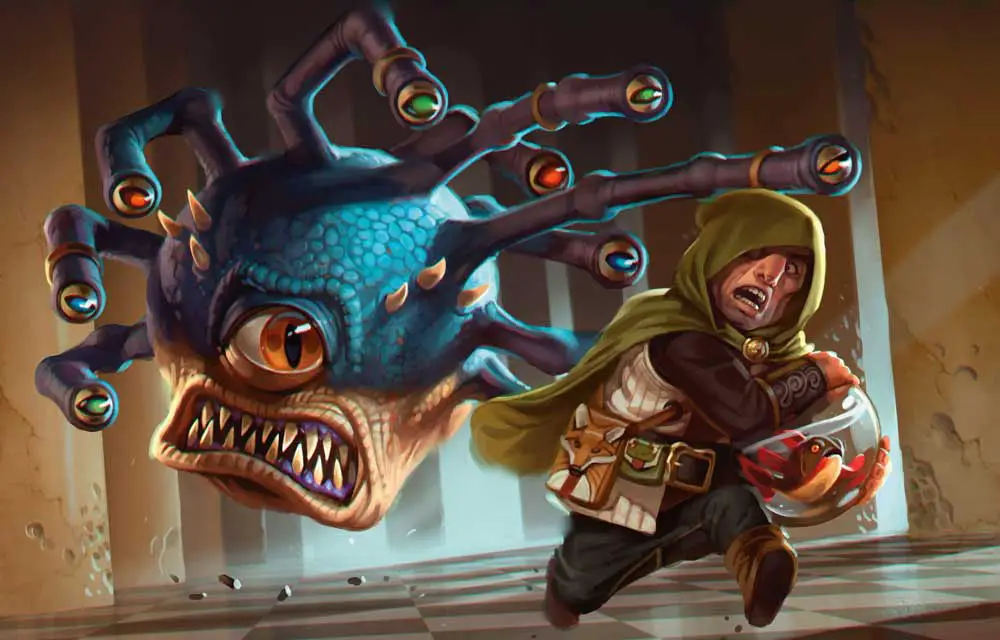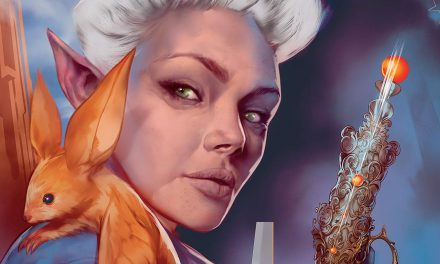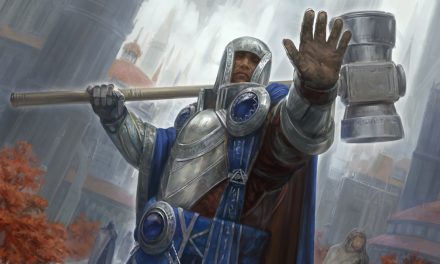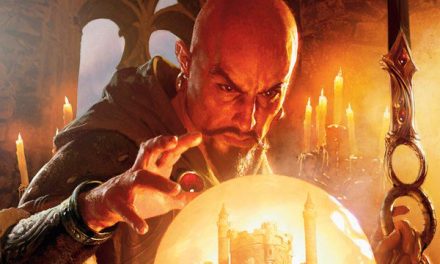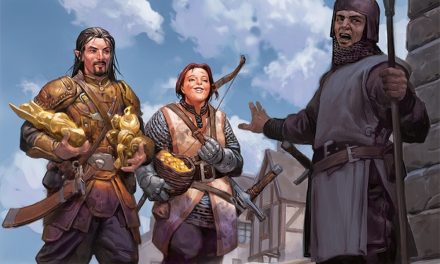For Dungeon Masters looking to drive the plot of their adventure forward, no tool is more useful than using the MacGuffin in D&D campaigns.
The classic D&D adventure structure goes something along the lines of “explore the dungeon, fight the monster, and take its stuff. Repeat.”
Others may take the form of “The Dark Lord is amassing his armies to wipe out all life in the world” or “The evil dragon is terrorizing the kingdom.”
There is nothing wrong with these types of plot hooks and they are time-tested formulas. In the first example, the characters are dungeon-delving adventurers looking for their fortune. In the second example, the characters are heroes who must rise to stop the bad thing from happening.
Clear objectives. Clear villains.
But what about their character’s motivations? Roleplaying, development, and a truly rich story rely on the characters being motivated to action.
Without motivation, the characters can easily shrug off the actions of the Dark Lord or the terrifying dragon as “S.E.P.” or “Someone Else’s Problem.”
“Why should I care?” wonders the level 2 Wizard, “I’ve got an exam in three days!”
So how does the MacGuffin help motivate the characters to go on the adventure and push the story forward?
What is a MacGuffin?
In short, the MacGuffin is the person or thing that serves to motivate the characters to advance the story. It’s an important technique that you have no doubt seen used in films or writing.
The briefcase in Pulp Fiction, the Sorcerer’s Stone in Harry Potter and the Sorcerer’s Stone, and the One Ring in The Lord of the Rings are all examples of MacGuffins. They provide the call to adventure in the characters’ lives and serve as the catalyst for the stories’ action.
Examples of a character who is a MacGuffin would include The Child (aka Baby Yoda) in The Mandalorian and Private Ryan in Saving Private Ryan.
The Catch of the MacGuffin in D&D
By its very nature, the MacGuffin itself isn’t the relevant or important part of the story being told. In film or literature, it’s something that the audience or reader doesn’t care about but the characters do.
But there’s a little bit of a snag when using the MacGuffin in Dungeons and Dragons: the players are the audience and the party is the characters.
This makes using a MacGuffin in D&D a little tricky. It should be suitably attractive and interesting to both the players and characters while also not being the sole focus of the entire adventure. Where most Dungeon Masters worry about metagaming in which the characters’ action is determined by the players’ knowledge, this creates the opposite effect! The characters likely know and care more about the MacGuffin than the person playing that character!
But there’s no need to worry! Despite this catch to using the MacGuffin in D&D, it is perfectly possible to create an awesome MacGuffin that is interesting and advances the plot!
The Elements of a Good MacGuffin in D&D
The MacGuffin can take many forms depending on what kind of story is being told.
It should be something tangible that is intriguing to the characters.
Fortunately, there are several modules that give inspiration for how to use a MacGuffin in D&D.
In The Curse of Strahd, the characters are seeking out powerful treasures that they can use to defeat Strahd and escape from Barovia. To acquire these treasures, the characters can be spurred into exploring areas of Barovia that they otherwise might not have been motivated to visit.
Similarly, the Stone of Golorr in Waterdeep Dragon Heist serves as the MacGuffin and key to opening the highly-coveted Vault of Dragons.
For the MacGuffin to work properly, it should answer the six basic questions: Who, What, Where, When, Why, and How.
Who is after the MacGuffin?
The characters are the ones after the MacGuffin. To get to it, they are willing to brave dark dungeons, perilous traps and fierce enemies.
Of course, villains and antagonists may be after the MacGuffin as well. The MacGuffin could be an item of immense power that they seek to use or a legendary artifact that they expect to sell for a fortune.
Introducing antagonists that are after the same MacGuffin as the party adds to the thrill and adventure of the story.
Antagonists add setbacks and additional risk to the party’s quest. In the case of a villain, it’s possible that the party may defeat a powerful villain who was threatening the world in their pursuit of the MacGuffin.
If you want help coming up with just such a villain, check out this other article on Crafting a D&D Villain Your Players Will Love to Hate!
What is the MacGuffin?
As mentioned previously, the MacGuffin doesn’t fully matter. Whether it’s the meaning of “Rosebud” in Citizen Kane or the contents of the briefcase in Pulp Fiction, it’s the story around the MacGuffin that matters.
It should be something that means enough to the characters that they are willing to go to extreme danger to acquire. What would spur the characters in your story to take on the dangerous life of an adventurer?
On a similar note, does it spur the villains and antagonists to the same action? These characters may already possess the MacGuffin and seek to keep the party from acquiring it. On the other hand, they may be racing against the party to get the MacGuffin.
With the MacGuffin being something both tangible and important, the villains are able to show their ruthlessness in seeking the Macguffin.
Where can the MacGuffin be found?
Determining the location of the MacGuffin is likely to be its own series of quests in itself. Information leading to it may be esoteric and only written about in rare and treasured tomes. Those with an interest in lore and whispered stories may know something about the MacGuffin.
The MacGuffin’s true location may be revealed by assembling clues from other dangerous dungeons that the party explores. In addition to the loot that they acquire in the dungeon, they find an item or clue that helps direct them closer to the MacGuffin’s location.
Alternatively, they party may know exactly where the MacGuffin is but need to gather resources to get there.
If the evil Lich has the MacGuffin and is planning to use it to release a horde of undead dragons, the party may find themselves needing to gather allies to storm the Lich’s fortress. This results in quests to help these potential allies with their own struggles so that they can be free to help the party.
In either case, this is how a Dungeon Master frames the MacGuffin in a way that encourages the characters to explore the world.
When do they need the MacGuffin?
The answer to this question should always be “now.”
It’s unlikely that they can acquire it right now and it should certainly not be as easy as running to the convenience store to grab a Coke and some candy.
But, nevertheless, it should be pressing enough that the characters will immediately begin acting to push the story forward.
Why do they want or need the MacGuffin?
Whatever it is that the players’ characters want, the MacGuffin should be (they believe) the key to getting it.
The Bard wants riches? MacGuffin.
The Paladin wants glory? MacGuffin.
The Cleric wants an ancient holy symbol? MacGuffin.
Work with your players to weave the MacGuffin into their backstory. If the party is just newly forming, it could be the uniting thread that keeps them together as a group. This doesn’t just move the story forward, it aligns the characters’ goals.
It may even be as simple as telling the group in Session Zero “You are searching for the fabled City of Gold” and letting them make a character that is interested in this quest.
How do they get the MacGuffin?
Briefly touched on in the other sections, the Dungeon Master should have a clear idea how the characters can get the MacGuffin.
Where will they find the clues that eventually lead them to it? Is this something that they can do by themselves or will they need to find allies? Are there other items that are needed to get to it?
The trail of breadcrumbs is often used to keep players on track towards the MacGuffin. But the crumbs should get more enticing as the party continues on.
Raising the stakes, learning more about the nature of the MacGuffin’s history and power, attracting the attention of others who are after it… These keep the MacGuffin desirable and important to the characters when you’re using a breadcrumb trail.
Conclusion – The MacGuffin in D&D
Using a MacGuffin is a fantastic way to get your players and their characters to “buy in” to the world that you are creating. It’s a way to keep the story moving along, inject action, introduce new characters, and align the group’s goals.
It’s a time-tested tool that forms the basis for some of the greatest films and literary works of all time. With a little bit of tweaking (remember: your audience members are also the characters!), the MacGuffin can bring that same urgency to your stories!
More than the classic “stop the bad guy, take his treasure” approach to telling a story, it gives your players a feeling that their characters have “skin in the game” so to speak.
What are some MacGuffins that you’ve used or have had used in your campaigns?
Drop a comment below!

